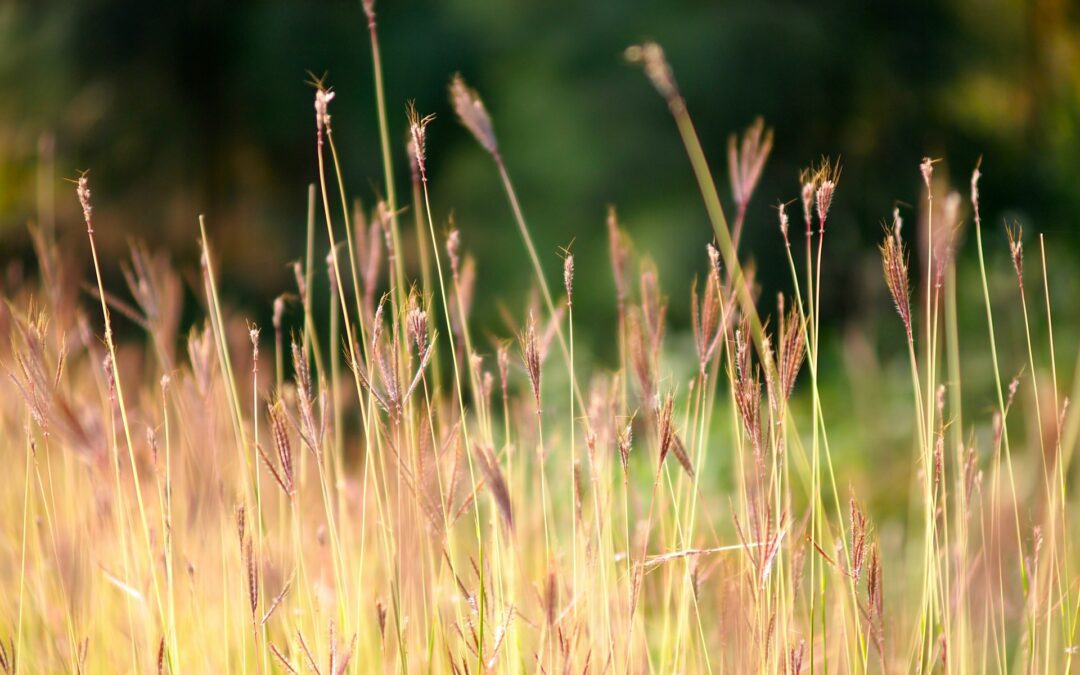A grass awn is the dried seed pod produced by invasive annual grasses. The types of grasses that produce grass awns are commonly found and widespread throughout the United States. All pets and livestock are at risk if exposed to grass awns. Grass awns can make their way into the eyes, ears, mouth, nose, or skin and hair of pets and cause many problems. Left untreated, grass awns can cause severe discomfort, inflammation, and infection within a pet’s body. Illness and infection caused by grass awns is a growing problem among pets, but if proper precautions are taken by knowledgeable owners, the damage caused by grass awns can be lessened overall.
Invasive annual grasses such as Foxtail, Cheatgrass, and Medusahead, are among the many types of grasses that produce grass awns. Thousands of grass awns can be produced by a single plant. Grass awns are composed of stiff plant fibers that are barbed in design, allowing the awn to propel itself in a singular, forward direction. This allows the awns to functionally propagate themselves into the soil or an unsuspecting pet.
These types of invasive grasses can be found in most landscapes throughout the United States, especially the Western States, because of their tolerance to drought and moisture alike. Though they can thrive in diverse landscapes, large numbers can be found in pastures, meadows, flatlands, and gardens or crops. When found in gardens and crops, these plants have the ability to negatively impact crop yields because of their innate ability to spread and contaminate the crop.
Hunting and working dogs are at the highest risk for exposure to grass awns because of their time spent in grassy locations. Any pet, including cats and livestock, are also at risk for exposure to grass awns if any time is spent in an area where these plants can be found. Pets with longer hair coats, as well as pets that tend to consume grass, are also at a higher risk.
Grass awns are picked up in the fur with ease by pets as they pass by plants with grass awns that are either loosely attached or that have already dropped. They are commonly found in the eyes, ears, mouth, nose, between the paw pads, or anywhere on the skin or in the fur. Grass awns found in the eyes can cause redness, inflammation, excessive tearing, corneal abrasions or ulcerations, and potential blindness. In the ears, they can cause irritation, infection, eardrum rupture, and possible neurological symptoms. If ingested, grass awns may become embedded in the gums, tonsils, esophagus, or stomach causing excessive drooling with or without blood, lack of appetite, and a potential for gastrointestinal perforation and peritonitis (inflammation of the peritoneum, or membrane that lines the abdominal organs) if the grass awn continues to migrate. When inhaled, grass awns may become lodged within the nose, trachea, or lungs causing excessive sneezing or coughing and nasal discharge with or without blood. It is possible for pets to develop pneumonia, pyothorax (an infected chest cavity), or pneumothorax (a punctured lung), if the grass awn continues to burrow. On the body, grass awns continue to migrate until they pierce the skin. Often, this will result in the formation of a sore or an abscess as the body attempts to wall off the foreign body. Depending on where the grass awn is located on the body, pets will often develop a fever, a lump or draining tract, or obsessively lick, scratch, or shake the affected area. If a leg or paw is affected, the pet may develop a limp as well. Typically, grass awns must be removed under sedation or anesthesia because of their location and to prevent additional discomfort to the pet.
It is difficult to avoid grass awns altogether, but there are precautionary measures that can be taken to lessen the likelihood of your pet being negatively impacted by them. It is important to learn what native grasses produce grass awns and how to identify them. Educate yourself on how to effectively remove the plants that produce grass awns from your property. Avoid areas that are likely to have these invasive grasses, and if that is not an option, carefully inspect your pet’s body whenever they may have been exposed to them. Keep your pets well-groomed and consider shaving between their paw pads to lessen the likelihood of grass awns becoming embedded in their feet. Look for early signs of discomfort such as excessive head shaking, sneezing and/or coughing, eye squinting, or limping and seek veterinary care urgently if noticed to avoid a potentially life-threatening infection or illness associated with grass awn exposure.
If you have questions or concerns about your pet and grass awns, please call 775-738-6116.

